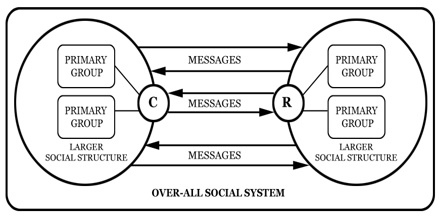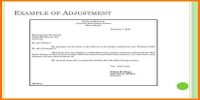Riley’s Communication Model
John W. and Matilda White Riley, the husband and wife team of sociologists from Brunswick published many articles jointly on communication. The two sociologists say such a view would fit jointly the many messages and individual reactions to them within an integrated communal arrangement and procedure. They developed a form to demonstrate sociological implications in communication. The Rileys developed a model (Figure) to illustrate these sociological implications in communication.
John W. Riley and Matilda White Riley, a husband and wife team of sociologists pointed out the importance of the sociological view in communication. They developed a model to illustrate sociological implications in communication. The model is shown below:

Fig: Sample Riley’s Communication Model of communication
The model indicates the communicator (C) emerges as part of a larger pattern, who sends messages in accordance with the expectations and actions of other person and groups within the same social structure. It is also true in the case of the receiver (R) in the communications process. In addition, both the communicator and receiver are part of an overall social system. The model clearly illustrates that communication is the way process.
The Riley developed this form to demonstrate the sociological implications in communication. The model indicates the communicator (C) emerges as a division of a bigger outline, sending messages in agreement with the expectations and actions of other persons and groups within the similar communal formation. This also is true of the receiver (R) in the communications procedure. In addition, both the communicator and receiver are an element of an overall social structure. The model plainly illustrates that communication is a two-way procedure. Within such an all-embracing system, the communication procedure is seen as a measurement of a bigger social procedure, both affecting it and being in turn affected by it. The model plainly illustrates that communication is a two-way intention.
The significant point the Rileys’ model makes for us is that we send messages as members of assured key groups and that our receivers receive our messages as members of major groups. John W. Riley and Matilda White Riley, a husband and wife team of sociologists pointed out the significance of the sociological view in communication. As you likely can imagine, group references might be an optimistic strengthening of our messages; at other times they might generate an unconstructive force. They developed a form to demonstrate sociological implications in communication.
- Bigger Social formation 1 contains Communicator, Primary Group a1 and a2. Communicator (c) is on behalf of the bigger social group 1.
- Bigger Social formation 2 contains Receiver, Primary Group b1, and b2. Receiver (R) is on behalf of the bigger social group 2.
- Bigger Social group 1 and larger social group 2 is coming under the Over All Social method.
Importance of the Model:
- The model clearly illustrates that communication is a two-way proposition.
- Communicator and recipient are interdependent and interrelated by feedback mechanisms.
- Communicator and receiver are part of a larger social context (be it family, community, or workplace); and are not acting in isolation.
















